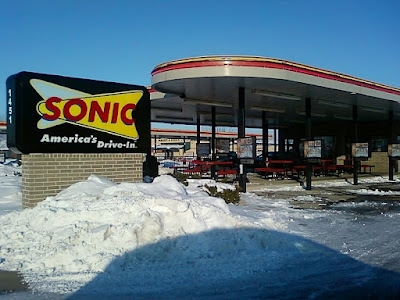While sipping coffee and browsing through my Google Reader this morning, I came across this image:

What IS is?
Whatever IT was, I was intrigued. I clicked in the link and found the full article
here. Basically it is individual magazines folded up and hung on a wall as the backdrop for a trade show booth. Way cool.
Having a sort of ho-hum-not-very-motivated-feeling-a-little-funky-blue sort of day, I grabbed a magazine, turned on the TV and started folding.
Here are the instructions straight from CraftSylish.com. (Their directions and photos)
 |
| A pile of old magazines is all that's needed to craft this project. Experience suggests a magazine of 100 pages is sufficient. You're welcome to use magazines with more pages, but be warned, more pages means more folding. |
 |
| Step 1: Begin by folding the top edge of each page down and into the binding of the magazine. Crease the page flat. Repeat for each page of the magazine. (NOTE: For demonstration purposes, I have only folded a few pages.) |
 |
| Step 2: Next, fold the bottom edge of each page up and into the binding. As above, repeat this operation on all of the pages of the magazine. |
 |
| NOTE: When performing step 2, we found it is best to NOT fully crease the fold. In the image to the left, notice that I have creased only from the bottom of the binding to about two-thirds of the way up toward the center "point". |
 |
| By NOT fully creasing the pages in step 2, your magazine will retain a "fluted" appearance that not only adds visual interest but also provides a little "springiness" between the pages. This helps keep the finished pieces looking full and robust instead of flat and limp. |
 |
| The finished piece. One hundred pages makes a piece suitable for attaching to a wall. If you wish to created a full 360-degree object, you'll need at least 200 pages in your magazine. |
 |
| While the finished piece may look quite elaborate, a glimpse at its reverse side reveals just how simple the folds really are. |
 |
| If one folded magazine looks cool, then two should look twice as cool. We at CraftStylish.com took this logic to the extreme in creating our Craft & Hobby Association Trade Show booth and folded 350 magazines and then attached them to a bright pink wall. We know how to get noticed!
|
And, here is my finished project!

POTD
These could get addicting ...... fast. I wonder how much of a fire hazard it would be to do a whole room?!







































